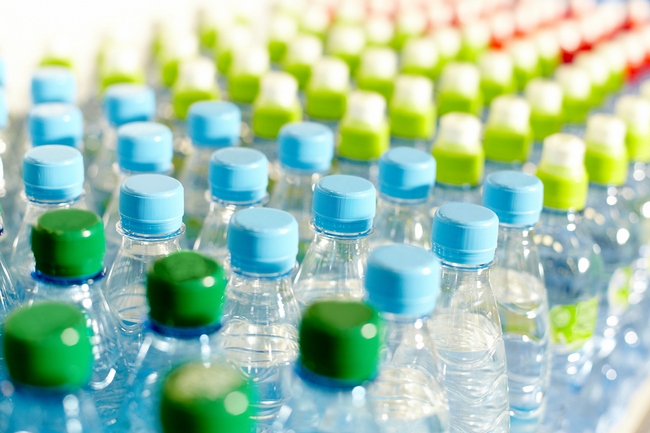- Make It Yourself Lavender Heart-Shaped Bath Bombs!
- 20 Things You Never Knew About “Down There”
- 12 Best Foods For Those Suffering From Arthritis Pain
- 12 Personal Hygiene Mistakes Almost Everyone Makes (Mom Never Told You About #4!)
- 15 Medicinal Plants And Herbs From The Cherokee People
- 12 Mind-Blowing Benefits Of Drinking Coconut Water During Pregnancy
- 12 Outstanding Winter Foods That Won’t Fatten You Up Like A Christmas Turkey
80 Percent of Packaging is Toxic Waste
A recent government report in Great Britain discovered that packaging that surrounds our food products can leach from the packaging and into your food. This means that the cardboard, plastic, Styrofoam, or even certain cling films have been found to contaminate some foods. Take a look at some of the health risks involved with some common packaging options we see on our food stuffs every day.
Cardboard
Cardboard commonly contains a chemical called DIPN ( diisopropyl-naphthalenes). These same DIPN’s are also used when making carbonless copy papers such as those used for credit card receipts or cash register receipts. This chemical has a nasty habit of leeching its ay into food products, even if the paper is listed as being “recycled”. Britain’s Ministry of Agriculture tested 11 food products and discovered that seven of these 11 products contained levels of DIPN. Products that seemed to be the most contaminated were frozen pizzas, ready to cook meals, and breakfast cereals. Having those inner plastic wrappers does not seem to stop the contamination. Although there are no reported deaths from this toxin, it has been known to cause irritation to the skin and eyes, as well as nausea, vomiting, headaches, diarrhea, as well as severe feelings of restlessness.

Photo credit: bigstock
YOU MIGHT ALSO LIKE: Germany Introduces a Dramatic New Type of Supermarket
Plastic Bottles
PVC plastic should be avoided because when it’s made and burned, it causes the formation of dioxins. Dioxins are known carcinogens that also cause hormone disruptions, skin cancer, along with liver and immune system problems. PVC can be entirely avoided because there are numerous other plastics available. You can tell if a plastic is PVC by looking at the recycling triangle. The number 3 denotes PVC. Avoid food products that contain the number 3 and plastic drinking straws, and plastic grocery bags. Other types of plastics should be recycled for the good of the environment.
Cling Film
Today’s modern cling type plastic wrap is safer today than ever because the toxic estrogen mimicking phthalates are no longer used. This is not to say, however, that all cling films do not contain this, or other, dangerous toxins. Many cling wraps are now made in China and their safety record is, well, let’s say it’s questionable. You would be wise to avoid any type of plastic wrap that says it was made in China, especially items from those 99cent stores that tend to stock items from China. Some cling wraps contain PVC, mentioned above. Just to be on the safe side, used waxed paper to cover food dishes, or glass containers for storage.
SEE ALSO: 10 Deadly Toxic Products You Can Live Without
Aluminum
Used for everything from drink cans to foil for home use, and linings of juice packets, aluminum is very energy intensive to produce. However, aluminum is one of the most recycled items around. There have been numerous studies lately that link aluminum to Alzheimer’s disease as well as dementia. In fact, a study done in Croatia showed that cola drinks sold in aluminum cans had high levels of aluminum in a soluble form in the drink itself. So, although it might be less damaging to the environment than other types of packaging, due to the increased risk of Alzheimer’s, it’s better to look for alternatives than to use aluminum foil. Also, you should replace any aluminum cookware you have with cast iron to minimize the risk even further.
Polystyrene
Everyone knows this one. Polystyrene, famous for its use in coffee cups and plastic tubs that picnic foods, such as potato salad, as stored and sold in. Even though the EPA and the FDA say that polystyrene are safe, don’t be fooled. Polystyrene builds up in the human body and long term exposure to even small amounts can cause neurotoxic abnormalities, problems with the lymph system, as well as having a carcinogenic effect. Studies show that this plastic can leech into foods and drinks, especially boiling hot drinks such as coffee. Bring your own reusable cup or glass and avoid polystyrene whenever you can. Read also about mercury and its toxic effect on your body.
Glass
One of the best packing materials of all; completely recyclable over and over again without breaking down. Unfortunately, many people never recycle their glass items. If people were to use more glass and recycle the glass items they do not need, we could eliminate thousands of pounds of glass from landfills every single year. Glass is your go to option whenever you need to buy food or store food at your home.
Source:
































